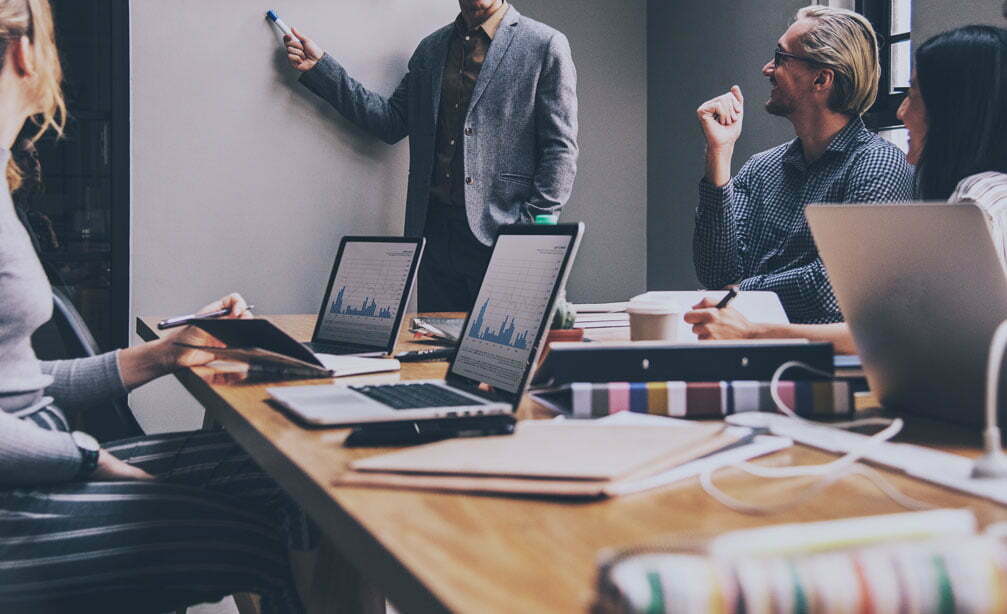
The landscape of corporate office interior design is constantly evolving, influenced by changes in work culture, technology, and employee expectations. As companies strive to create environments that foster productivity, collaboration, and well-being, several key trends have emerged. Understanding these trends can help businesses make informed decisions about their office spaces, ensuring they remain competitive and appealing to both employees and clients. Here are five trends in corporate office interior design that you should know.
1. Emphasis on Flexibility and Adaptability
One of the most significant trends in corporate office interior design is the shift towards flexible and adaptable workspaces. As remote work and hybrid models become more prevalent, companies are rethinking traditional office layouts.
-
Modular Furniture: Many firms are opting for modular furniture that can be easily reconfigured to accommodate different work styles and team sizes. This flexibility allows for quick adjustments based on project needs or employee preferences.
-
Multi-Functional Spaces: Designers are creating multi-functional areas that can serve various purposes, such as collaboration zones, quiet spaces, and meeting rooms. This adaptability helps maximize the use of available space and supports diverse work activities.
2. Biophilic Design
Biophilic design is gaining traction in corporate office interior design as companies recognize the benefits of incorporating natural elements into their workspaces. This approach aims to create a connection between employees and nature, promoting well-being and productivity.
-
Natural Light: Maximizing natural light is a key component of biophilic design. Large windows, skylights, and open layouts allow sunlight to flood the workspace, reducing the need for artificial lighting and enhancing mood.
-
Greenery and Natural Materials: Incorporating plants, living walls, and natural materials like wood and stone can create a calming atmosphere. Studies have shown that exposure to nature can reduce stress and improve cognitive function, making it a valuable addition to any office.
3. Technology Integration
As technology continues to advance, corporate office interior design is increasingly focused on integrating smart solutions that enhance functionality and efficiency.
-
Smart Office Solutions: Many companies are adopting smart technologies that allow for better control of lighting, temperature, and security. These systems can be managed through mobile apps, providing employees with a comfortable and personalized work environment.
-
Collaboration Tools: With the rise of remote work, integrating technology that facilitates collaboration is essential. This includes video conferencing equipment, interactive whiteboards, and project management software that can be easily accessed from various devices.
4. Focus on Employee Well-Being
The well-being of employees has become a top priority for many organizations, and corporate office interior design is reflecting this shift. Creating a healthy and supportive work environment can lead to increased job satisfaction and productivity.
-
Wellness Spaces: Many offices are incorporating wellness areas, such as meditation rooms, fitness centers, or quiet zones where employees can recharge. These spaces encourage employees to take breaks and prioritize their mental and physical health.
-
Ergonomic Design: Ergonomics plays a crucial role in corporate office interior design. Providing adjustable desks, ergonomic chairs, and proper lighting can help reduce discomfort and prevent injuries, contributing to a healthier workforce.
5. Sustainable Design Practices
Sustainability is a growing concern for businesses, and corporate office interior design is increasingly focused on eco-friendly practices. Companies are recognizing the importance of reducing their environmental impact and creating sustainable workspaces.
-
Sustainable Materials: Many firms are opting for sustainable materials, such as recycled or locally sourced products, in their office design. This not only reduces the carbon footprint but also supports local economies.
-
Energy Efficiency: Incorporating energy-efficient systems, such as LED lighting and smart HVAC systems, can significantly reduce energy consumption. Many companies are also pursuing certifications like LEED (Leadership in Energy and Environmental Design) to demonstrate their commitment to sustainability.
Conclusion
The trends in corporate office interior design reflect a broader shift towards creating workspaces that prioritize flexibility, well-being, and sustainability. By embracing these trends, companies can create environments that not only enhance productivity but also foster a positive workplace culture. As the nature of work continues to evolve, staying informed about these trends will help businesses adapt and thrive in an ever-changing landscape.
Investing in thoughtful corporate office interior design is not just about aesthetics; it’s about creating spaces that support the needs of employees and align with the company’s values. Whether you’re planning a new office or renovating an existing space, considering these trends can lead to a more effective and enjoyable work environment.
What People Also Ask
What is corporate office interior design?
Corporate office interior design refers to the process of designing and planning the interior spaces of corporate offices. This includes creating functional layouts, selecting furnishings, and incorporating elements that reflect the company’s brand and culture.
Why is flexibility important in office design?
Flexibility in office design is important because it allows spaces to adapt to changing work styles and team dynamics. With the rise of remote work and collaborative projects, flexible layouts can accommodate various activities and promote productivity.
How does biophilic design benefit employees?
Biophilic design benefits employees by creating a connection to nature, which can reduce stress, improve mood, and enhance cognitive function. Incorporating natural elements, such as plants and natural light, can lead to a healthier and more productive work environment.
What role does technology play in modern office design?
Technology plays a crucial role in modern office design by facilitating communication, collaboration, and efficiency. Integrating smart solutions and collaboration tools can enhance the functionality of the workspace and support remote work.
How can sustainable design practices impact a business?
Sustainable corporate office interior design practices can positively impact a business by reducing its environmental footprint, lowering operational costs, and enhancing its reputation. Companies that prioritize sustainability often attract environmentally conscious clients and employees, contributing to long-term success.





Leave a Reply